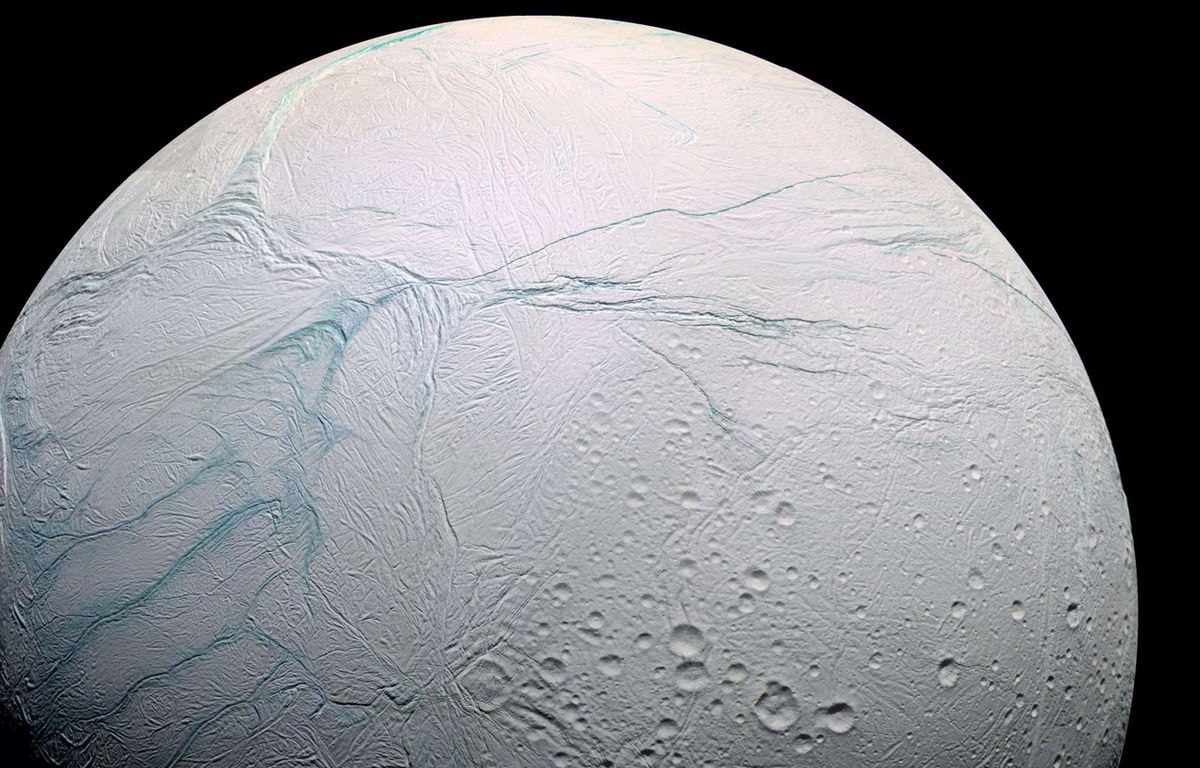
Discover the key to life on Saturn’s moon
The long search for extraterrestrial life has received a major boost: Phosphorus, an essential element for life, has been discovered in an ocean beneath the icy surface of Saturn’s moon Enceladus.
The discovery, based on a study of data collected by NASA’s Cassini probeit was published on Wednesday in the prestigious magazine nature. The Cassini probe explored Saturn, its rings and moons from 2004 until its destruction in the gas giant’s atmosphere in 2017.
“This is an amazing discovery for astrobiology,” said Christopher Glenn of the Southwest Research Institute, one of the paper’s co-authors. “We found an abundance of phosphorous in ice core samples ejected from the underground ocean.”
essential element
Geysers at Enceladus’ south pole spit tiny, icy particles into space that feed Saturn’s E ring, the giant planet’s outermost and thinnest.
Scientists have already detected minerals and organic compounds in the ice particles released by Enceladus, but not phosphorous, which is an essential component of DNA and RNA that is also found in the bones and teeth of humans and animals, and even in ocean plankton.
In fact, life as we know it would not be possible without phosphorus. Geochemical models predicted the presence of phosphorus in these particles, a prediction published in a previous paper, but not yet confirmed, Christopher Glenn notes.
“This is the first time that this elemental element has been detected in an ocean other than Earth,” added the study’s lead author, Frank Postberg, a planetary scientist at Freie Universitat Berlin, in a NASA statement.
mission in 2050?
For this discovery, the authors combed through data collected by the Cassini probe’s Cosmic Dust Analysis instrument. They confirmed the results by conducting laboratory experiments to prove that the ocean of Enceladus contains phosphorus in various forms that are soluble in water.
Over the past 25 years, planetary scientists have discovered that there are many worlds with oceans under a surface layer of ice in our solar system. There is for example in Europe, a moon of Jupiter. On Titan, the largest of Saturn’s moons, and even on the dwarf planet Pluto.
Planets with surface oceans, like Earth, must be far enough from their star to maintain life-sustaining temperatures. The discovery of worlds with subterranean oceans increases the number of potentially habitable planets.
“With this discovery, it is now known that Enceladus’ ocean meets what is generally considered to be the first necessary condition for life,” said Christopher Glenn. “The next step is obvious — we have to go back to Enceladus to see if the habitable ocean is actually inhabited. Unfortunately, that won’t be the case now: last year, NASA proposed a mission (PDF) aims to study the surface of Saturn’s moon, but with a launch in the year 2038 and an arrival in the year 2050.

“Incurable web evangelist. Hipster-friendly gamer. Award-winning entrepreneur. Falls down a lot.”
